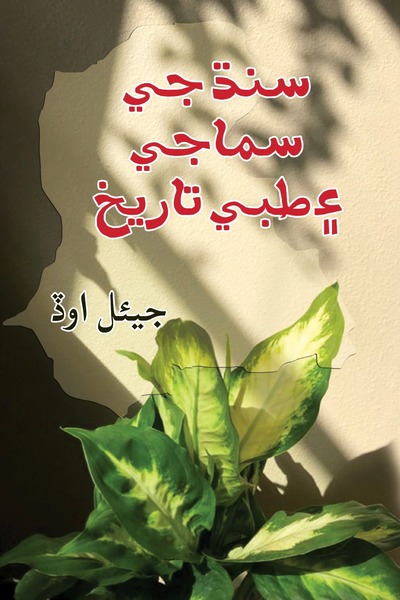ڪچنار (Bauhinia Variegata)
8 کان 12 سينٽي ميٽر 4.7 _ 3.1 ڊايا ميٽر پنجن شيٽن تي مشتمل آهي ۽ گهاٽا “گل ۽ ٻور جهلي ميوي بدران ڦريون ڏيئي. ڦرين ۾ 30 سينٽي ميٽر 11.8 _ 5.9 ڊيگهہ ۾ ڦريون ٿين جيڪي ٻج سان ڀرپور ٿين. Bauhinia Variegata جنھن کي ڪچنار جي نالي سان سڏيو وڃي ٿو سندس Buds ۽ ٻور تمام نرم ۽ نفيس ٿئي.
هن جو اصل وطن چائنا کان ٿرو سائوٿ ايسٽ ايشيا کان انڊين سب ڪانٽيننٽ آهي عام ماڻھو هن کي Orchard tree بہ ڪري پڪاريندا آهن پر دراصل ائين صحيح ڪونھي ڇو تہ هن وڻ جو آرچرڊ ٽري سان ايترو ويجهو واسطو ڪونھي. هن جي گلن ۾ محسور ڪن خوش بوءِ ٿئي ٿي گلن مان جدا جدا مٺائي جون ڊشون ٺاهيون وينديون آهن ۽ خوشيءَ جي موقعن تي پاڻ ۾ ورهايون وينديون آهن.
گلن جي مند ۾ Humming birds، ۽ Throuled humming birds، هنن گلن تي عاشق آهن ۽ هنن جا ولرن جا ولر گلن مٿان لامارا ڏيندا رهن ٿا. ڪچنار جي Buds ۽ گونچن مان آچار ۽ ڪري ٺاهي ويندي آهي. نيپال ۾ هن ٻوٽي کي Koirala ۽ ان جي گل کي Kairala ka Phool نيپالي زبان ۾ چيو وڃي ٿو. ڪچنار جا Buds ۽ ٻور ۽ گونچ پٽي نيپالي طرز جو آچار ٺاهيو وڃي ٿو.
گل ۽ ان جي گونچن کي بوائل ڪري ميشڊ پٽاٽا بوائل ٿيل ساوا مرچ، ٿوم، تازا بصر، لوڻ، پيپسر. عورتن لاءِ حيض وقت ڪچنار سان علاج جي صورت ۾ مدد ورتي وڃي ٿي.
Termuric Power roasted sesame, power, cumin power, coriander leamy, and spices like, heated mustard oil and femung rekek seeds is then added to the mixture and then lemon juice on lime juice (chuck armilo in Nepal) as per taste. This achar is then saved instantly the ahcar is important part of the meal served during the ghode Jatra festival.
Bauhinia variegata (Kachnar): A Medicinal Tree with Multifaceted Benefits
Bauhinia variegata, commonly known as Kachnar, is a deciduous tree native to the Indian subcontinent (India, Bhutan, Nepal, and Pakistan) and parts of Southeast Asia (Laos, Myanmar, Vietnam, Thailand) and China. Known for its cultural and medicinal significance, it reaches a height of up to 15 meters and features smooth, dark brown bark, suborbicular leaves, and pink or white flowers. In Ayurveda, Kachnar is widely recognized for its therapeutic properties, particularly its stem bark and flowers, which are used to treat various disorders such as:
• Gandamala (Lymphadenopathy)
• Galaganda (Goitre)
• Arbuda (Tumor)
• Ashthila (Benign Prostatic Hyperplasia - BPH)
• Kapha-Pitta Dosha disorders
The flowers are noted for their:
• Pittaghna (Pacify Pitta dosha)
• Rakta Pradaraghna (Treating Dysfunctional Uterine Bleeding)
• Kaasghna (Curing cough)
• Kshyaghna (Anti-tubercular properties)
In Himachal Pradesh and Northeastern India, the buds and flowers are consumed as vegetables, chutneys, and pickles, demonstrating both cultural and dietary importance.
1. Anti-Diabetic Activity
o Aqueous extracts of B. variegata leaves significantly reduced plasma glucose, cholesterol, triglycerides, serum creatinine, and blood urea levels in animal models of Type I and II diabetes.
o Histopathological studies revealed decreased necrotic changes in pancreatic tissues.
o Ethanolic extracts and roseoside, a metabolite, demonstrated insulin secretion enhancement in a dose-dependent manner.
2. Anti-Microbial Activity
o Extracts from B. variegata leaves exhibited antibacterial properties against pathogens such as Klebsiella pneumoniae, Proteus spp., E. coli, and Pseudomonas spp..
o In goats with Staphylococcus aureus-induced mastitis, the bark powder showed antibacterial, bio-enhancing, and anti-inflammatory effects.
3. Chelation Properties
o Polar extracts demonstrated significant metal ion chelation, particularly for ferrous ions, suggesting potential use in conditions like hemochromatosis.
4. Cytotoxic Activity
o Leaf extracts exhibited cytotoxic effects against multiple cancer cell lines (e.g., prostate, lung, ovary, breast, and leukemia) and showed anticarcinogenic and antimutagenic activity in animal studies.
o Methanolic extracts significantly reduced tumor size and volume in mice models.
5. Antioxidant Activity
o Aqueous and ethanolic extracts of the bark and roots displayed potent free radical scavenging and antioxidant activity through various methods.
6. Neural Activity
o Flowers exhibited acetylcholinesterase (AChE) inhibition, indicating potential applications for Alzheimer’s disease treatment.
7. Nephroprotective Activity
o Whole stem ethanol extract attenuated cisplatin-induced nephrotoxicity in rats, reducing serum creatinine and urea levels while improving urine output and body weight.
8. Anti-Inflammatory & Analgesic Activity
o Triterpene saponins from leaves reduced edema, prostaglandin E2 levels, and granuloma size. Analgesic effects were observed in both visceral and central nociceptive models.
9. Hypolipidemic Activity
o Bark and root extracts decreased plasma cholesterol, triglycerides, LDL, and VLDL levels while increasing HDL levels in hyperlipidemic rats.
10. Other Potential Uses
o B. variegata demonstrated potential for nanoparticle synthesis and mosquito control.
Discussion
In Ayurveda, B. variegata has long been used to treat conditions such as goiter (Galaganda), BPH (Ashthila), and Kapha-Meda dominant disorders. Recent studies explore its efficacy in combating emerging health challenges, including drug-resistant pathogens, diabetes-related complications, cancer, and neurodegenerative diseases like Alzheimer’s.
Key findings highlight its antidiabetic, antimicrobial, nephroprotective, anticarcinogenic, and chelating properties, paving the way for further research into its medicinal potential. Its role in antioxidant and acetylcholinesterase inhibition activities also opens doors for exploring treatment avenues in oxidative stress-related and neurodegenerative diseases.
Conclusion
Bauhinia variegata is a promising herbal resource with diverse medicinal properties. With ongoing research and validation, it has the potential to address modern health challenges, offering an alternative to conventional synthetic medicines. It underscores the importance of revisiting traditional knowledge systems like Ayurveda to develop holistic healthcare solutions.
